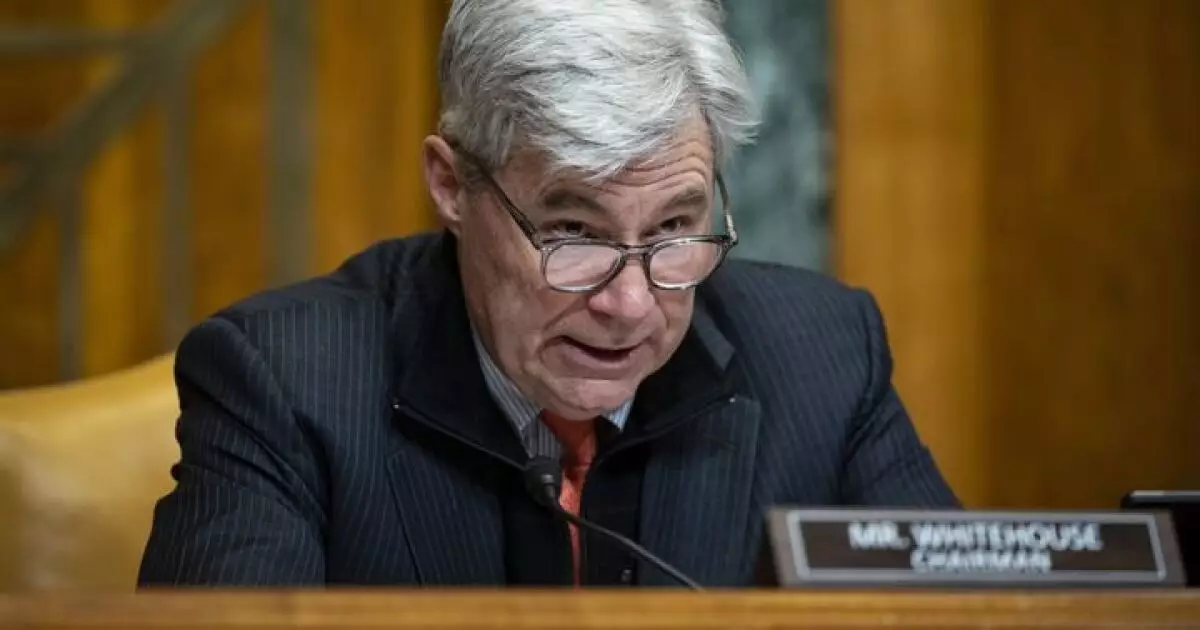The recent announcement from the White House regarding a temporary freeze on federal funds for infrastructure projects—only to have the freeze rescinded—has created significant confusion within legislative and transportation sectors. Lawmakers express concern that the current administration’s approach undermines the collaborative spirit of bipartisan agreements, raising questions about the reliability of future federal reimbursements for vital infrastructure projects. This turbulence in funding has put additional pressure on state officials and highlight the urgent need for a coherent infrastructure funding strategy moving forward.
Senator Sheldon Whitehouse, the Democratic ranking member of the Environment and Public Works Committee, articulated the frustrations many in government are feeling. He pointed out the implications of such inconsistencies, stating, “We simply cannot have a situation in which Congress comes together in bipartisan fashion… and a president… chooses among them.” His remarks reflect a deeper issue: the fragility of trust in federal funding mechanisms when policymakers see significant shifts, such as the abrupt funds freeze followed by litigation from multiple states.
While the funds have been unfrozen, local and state governments continue to grapple with the consequences. In states like Rhode Island, where officials rely heavily on federal reimbursement for ongoing transportation initiatives, the situation is still muddled. The repercussions extend beyond immediate funding concerns, as they create delays in project implementation and exacerbate the already fragile state of infrastructure across the country.
One of the major elements complicating infrastructure funding is the impending expiration of the funding provisions in the Bipartisan Infrastructure Law, set to conclude in September 2026. As lawmakers and officials scurry to reauthorize a broader infrastructure bill—potentially encompassing areas like airports and broadband—there is a growing rift between prioritizing traditional infrastructure and exploring modernized, comprehensive solutions.
Joung Lee, the AASHTO director of policy and government relations, highlighted this dilemma, emphasizing that any new project law must focus on surface transportation: highways, transit, and related safety measures. Meanwhile, local departments of transportation express a preference for more predictable formula funding over the current system, which incentivizes competitive grant applications that can be slow and cumbersome. AASHTO president Garrett Eucalitto echoed these sentiments, noting that valuable time could be wasted navigating the complexities of grant negotiations rather than executing much-needed projects on the ground.
Calls for a shift back to formula funding reflect a broader desire among state officials to streamline access to federal resources. Senator Shelley Moore Capito, chair of the Environment and Public Works Committee, advocated for prioritizing these funds over discretionary grants, arguing that state governors and legislators are best positioned to determine funding distribution based on localized needs. This sentiment aligns with frustrations voiced by many within the transportation sector about the slow pace and inefficiencies commonly associated with federal grant processes.
As policymakers grapple with the content and structure of future funding legislation, it’s clear that the prevailing momentum favors predictable funding streams that avoid the emergent issues of discretion and uncertainty. This decentralized approach could enhance responsiveness to regional needs while alleviating some of the bureaucratic heaviness that often bogs down infrastructure execution.
Compounding these issues is the prospect of the Highway Trust Fund running dry by 2027, particularly under the increasing prevalence of electric vehicles (EVs), which do not contribute to traditional fuel tax revenues. This suggests a looming crisis in sustaining infrastructure funding that many states have begun to address by implementing their own EV user fees and registration charges. Russell McMurry, AASHTO’s vice president and treasurer, noted a lack of cohesive national policy on these fees, underscoring the fragmented approach that currently characterizes state-level responses to the EV proliferation.
Moreover, recent policy changes targeted at loosening corporate average fuel economy standards signal a potential regulatory pushback against aggressive environmental objectives, as articulated by new Department of Transportation Secretary Sean Duffey. With such changes, lawmakers like Capito predict a retreat from EV mandates, which could affect the long-term funding strategies tied to sustainability initiatives.
The convergence of funding instability, legislative indecision, and the realities imposed by emerging technologies poses a significant challenge for infrastructure reliability and development. Moving ahead, a focused discourse on cooperative funding models alongside substantive reauthorization of the infrastructure law will be crucial in securing the future of transportation systems across the United States.

